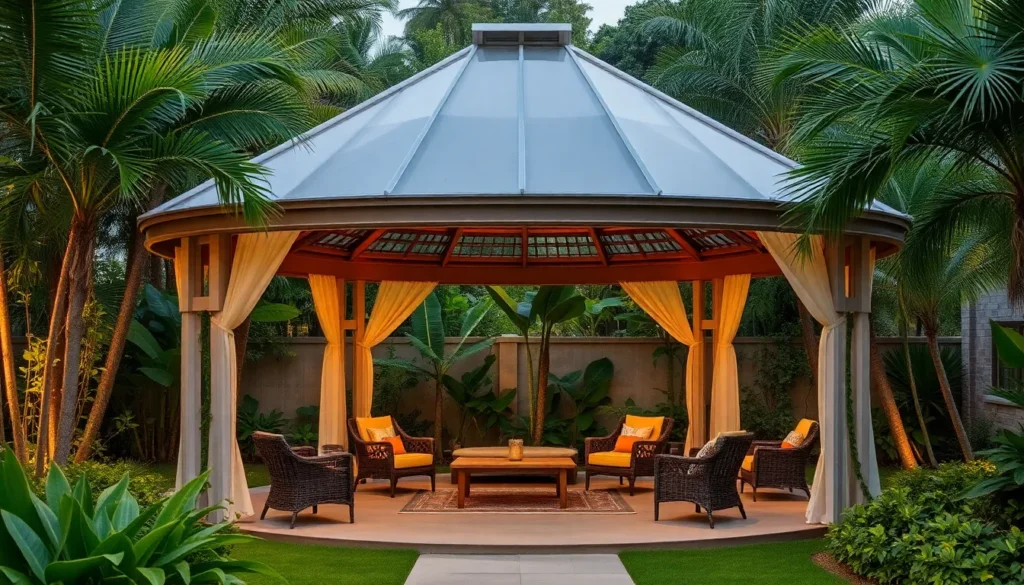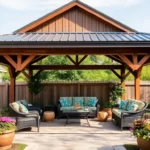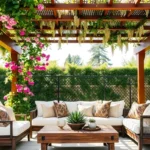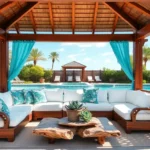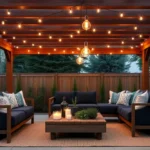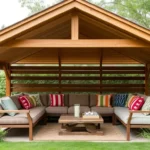Creating a serene outdoor haven is more than just a trend—it’s a delightful extension of your home that invites tranquility, especially when designed to withstand nature’s whims. Whether you’re a novice just dipping your toes into the world of outdoor design or a seasoned homeowner ready to elevate your space, embracing the elegance and resilience of a well-crafted gazebo can transform your garden into a sanctuary that braves even the fiercest monsoon.
In this article, we will explore nine innovative covered gazebo designs that effortlessly blend style with durability, ensuring your outdoor gatherings remain uninterrupted by the weather. You’ll discover practical tips and insights into selecting materials and structures that not only elevate your aesthetic but also promise longevity and peace of mind. Join us as we delve into the art of crafting a monsoon-proof retreat that complements your lifestyle and enhances your outdoor experience.
Understanding Monsoon-Ready Gazebo Features
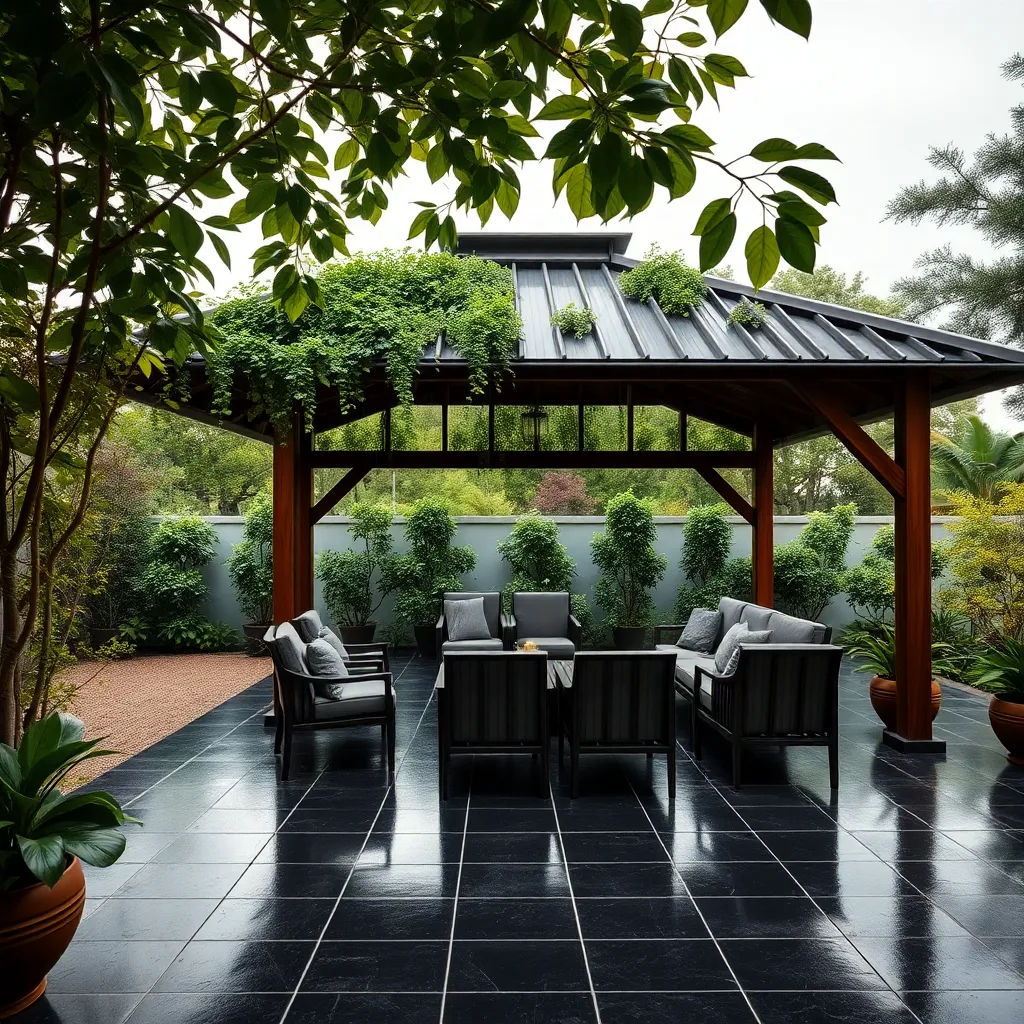
When preparing a gazebo to withstand the challenges of monsoon weather, selecting the right materials is crucial. Opt for **weather-resistant materials** like treated wood, aluminum, or steel to ensure durability and longevity. Incorporate a **roof with a steep pitch** to facilitate water runoff, reducing the risk of leaks. For added protection, use a waterproof canopy or roofing material such as polycarbonate or metal shingles, which can effectively repel water and resist wind damage.
Additionally, anchoring your gazebo securely is essential for stability in high winds. Utilize **heavy-duty anchors or ground stakes** to firmly secure the structure to the ground. To enhance strength, consider reinforcing the gazebo’s frame with cross braces or additional support beams. For those with advanced skills, integrating a drainage system around the gazebo can prevent water accumulation and damage. These measures not only protect the gazebo but also provide a safe, dry retreat during heavy rains.
Choosing Durable Structural Materials
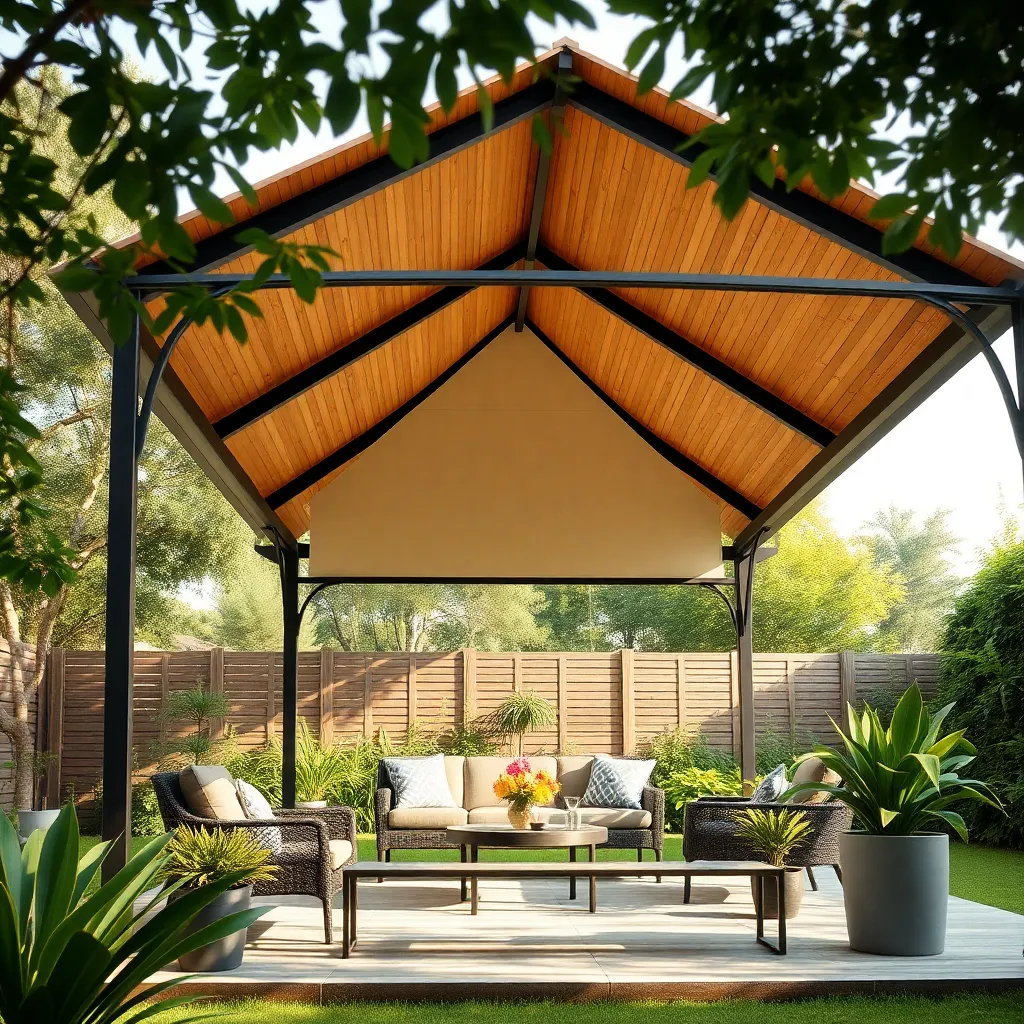
When selecting materials for a gazebo that can withstand monsoon conditions, focus on durability and resistance to moisture. Pressure-treated wood is an excellent choice for the structure as it offers both strength and resistance to rot and insects. For metal options, consider using galvanized steel or aluminum, which provide excellent resistance to corrosion and are less likely to warp or degrade in humid conditions. It’s important to ensure that all metal components are powder-coated for additional protection against the elements.
Beyond the primary structure, the choice of roofing materials can significantly impact your gazebo’s longevity during intense weather. Opt for polycarbonate panels or heavy-duty shingles that are both waterproof and UV resistant. These materials not only protect against heavy rainfall but also offer added insulation against the sun’s rays. To further enhance durability, use stainless steel fasteners and connectors, as these are less likely to rust and will maintain the integrity of your gazebo through numerous monsoon seasons. By combining these materials, you create a robust, long-lasting outdoor shelter that’s ready to face any storm.
Optimal Roof Designs for Rainfall
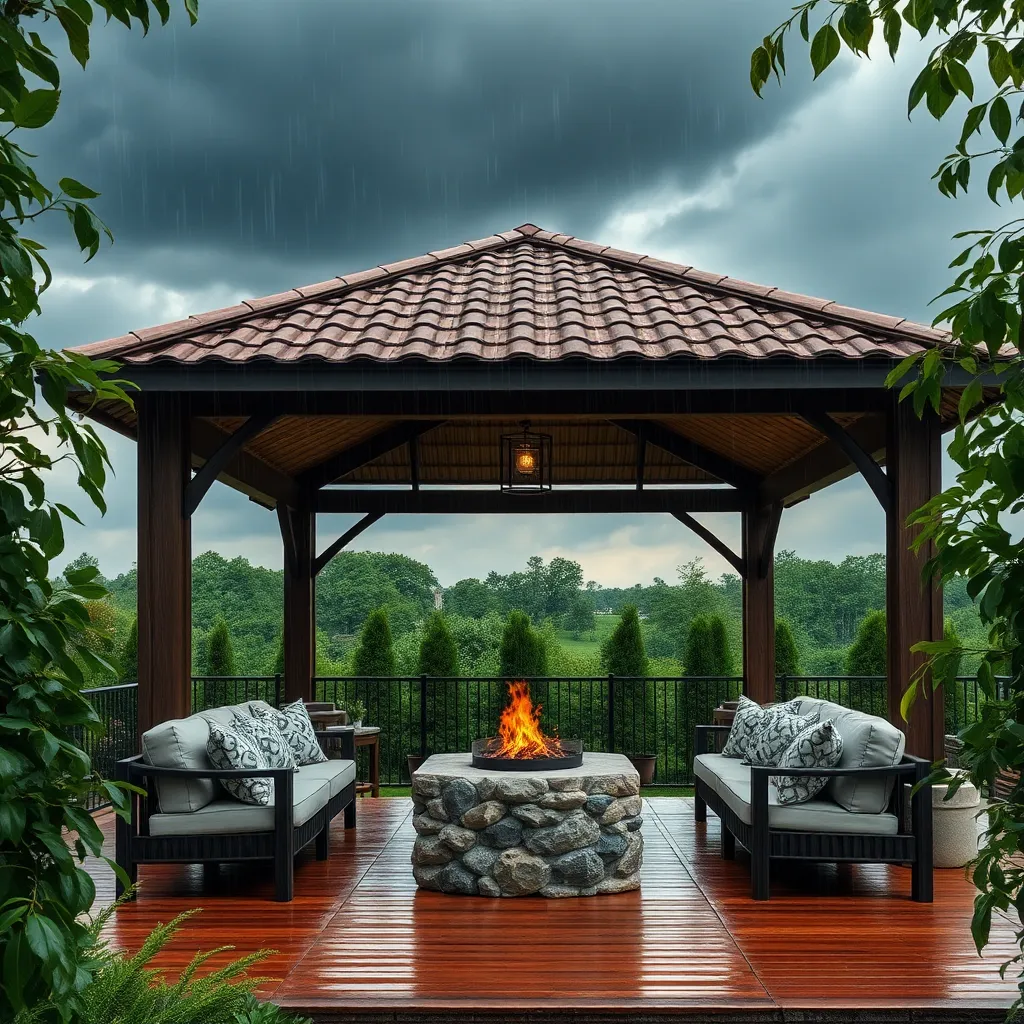
When designing a gazebo roof to withstand monsoon rains, the angle of the slope is crucial. A steep pitch, typically around 30 to 45 degrees, is ideal for ensuring water runoff and preventing pooling, which can lead to structural damage over time. Utilize materials like corrugated metal or polycarbonate sheets for their superior water-shedding capabilities and durability, offering both beginners and experienced DIYers a reliable choice for heavy rainfall conditions.
Additionally, incorporating a well-designed gutter system can significantly enhance your gazebo’s resilience. Ensure gutters are at least 5 inches wide to handle substantial water flow and are made from rust-resistant materials like aluminum or PVC. For those looking to elevate their design, consider installing a decorative fascia that not only adds aesthetic value but also strengthens the roof edge against wind-driven rain. This combination of practical design and robust materials will help your gazebo thrive even in the most challenging monsoon climates.
Incorporating Water-Resistant Fabrics
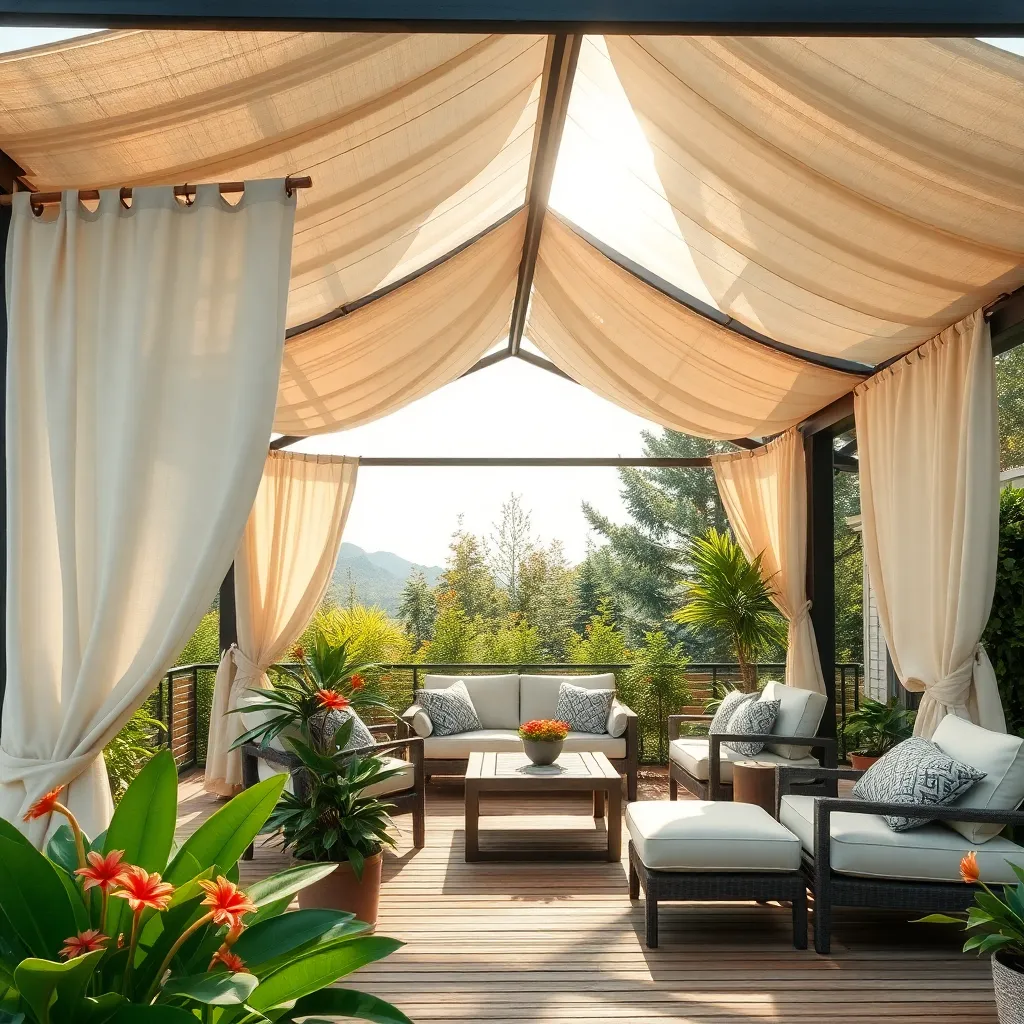
To ensure your gazebo withstands the monsoon season, consider incorporating water-resistant fabrics into your design. Fabrics such as polyester or vinyl-coated materials are excellent choices due to their water-shedding capabilities and durability. When selecting a fabric, look for those with a high denier rating—above 600D is ideal—as it indicates a thicker, more water-repellent option.
For added protection, install the fabric at a slight angle to facilitate runoff, preventing water pooling that can lead to damage. Consider reinforced seams and grommets, which provide additional structural integrity and prevent water from seeping through stitching. Advanced users might opt for UV-resistant treatments, which not only protect against rain but also help the fabric resist fading under harsh sunlight, extending the life of your gazebo cover.
Ensuring Proper Drainage Solutions
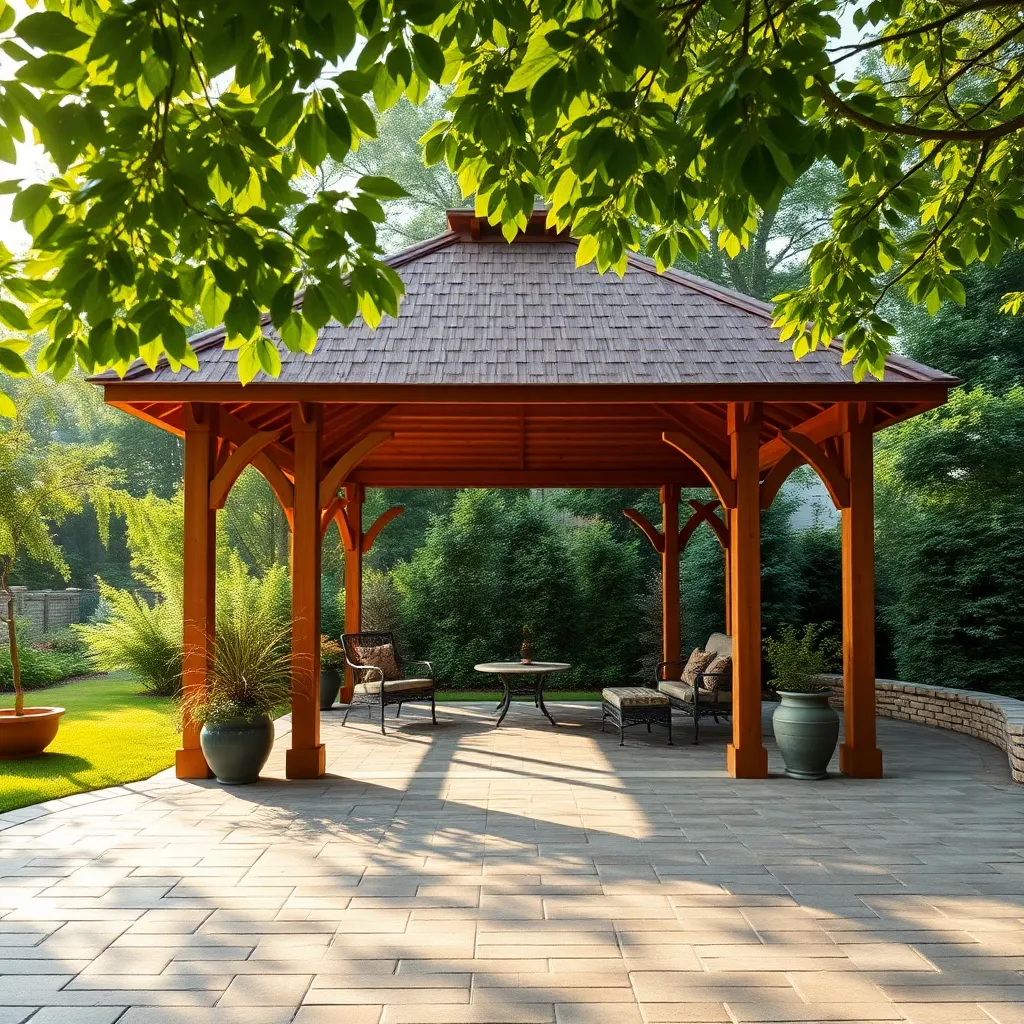
Proper drainage is crucial for ensuring your gazebo withstands heavy rains, especially during monsoon seasons. Start by selecting a site with natural slope to prevent water accumulation. If your yard is flat, consider creating a slight gradient using soil or gravel to direct water away from your structure. Installing a French drain system is an advanced option, effectively channeling excess water underground and away from your gazebo. This involves digging a trench around the gazebo and lining it with gravel and a perforated pipe.
For an added layer of protection, use gutter systems along the edges of your gazebo roof. These can be made from durable materials like aluminum or PVC, ensuring longevity and resistance to rust. Connect the gutters to downspouts that lead water safely away from the gazebo’s foundation. For a simple solution, use rain chains that create an aesthetically pleasing waterfall effect while guiding water to a designated drainage area. These techniques not only preserve the integrity of your gazebo but also contribute to the overall health of your garden by preventing waterlogging.
Enhancing Stability Against Winds
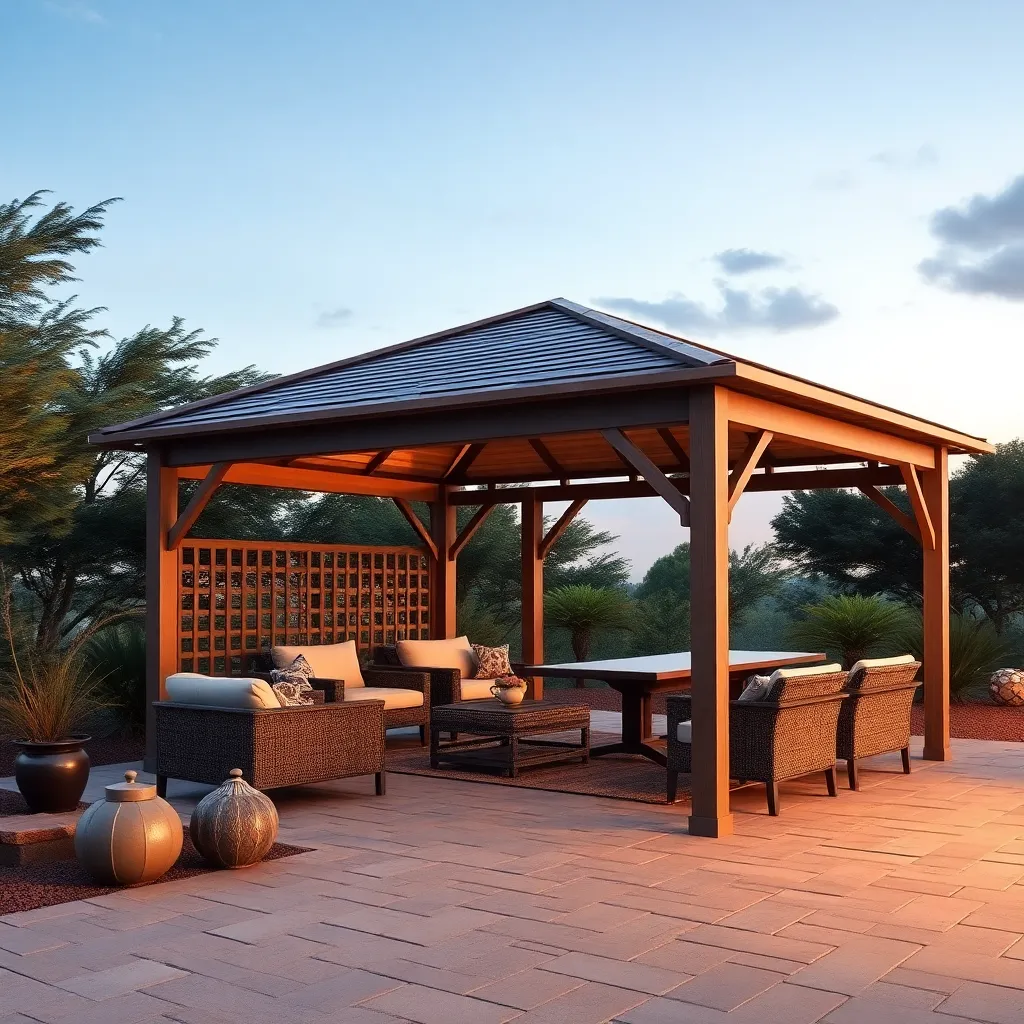
To withstand strong monsoon winds, it’s essential to focus on the stability of your gazebo. Start by selecting heavy-duty materials such as steel or reinforced aluminum for the frame, as these provide a robust foundation. Anchoring the gazebo is crucial; use concrete footings or ground anchors to secure each post firmly into the ground, preventing any unwanted movement. For those in particularly windy areas, consider adding cross-bracing with metal cables or tension rods for additional support.
Design elements also play a vital role in enhancing wind resistance. Opt for aerodynamic roof designs, like a sloped or curved roof, to reduce wind load and prevent uplift. Incorporate wind panels or roll-down curtains made from durable, weather-resistant materials to shield against gusts while allowing flexibility in harsh weather. For advanced protection, install removable sidewalls that can be easily attached before a storm and detached when not in use, combining stability with versatility.
Ventilation Techniques for Humid Climates

In humid climates, proper ventilation in gazebo design is essential to minimize moisture buildup and maintain comfort. Consider incorporating louvered roof panels that can be adjusted to control airflow and sunlight. These panels allow warm, humid air to escape while letting cooler air circulate, reducing the risk of mold and mildew. For a more advanced approach, install ceiling fans with weatherproof features to ensure continuous airflow during still, muggy days.
Another effective technique is to utilize elevated flooring, which promotes better air circulation beneath the structure. Materials such as composite decking or pressure-treated wood are ideal for this purpose, offering durability and resistance to moisture. Additionally, consider incorporating vented skirting around the base of the gazebo to allow air to flow freely without compromising privacy. By strategically choosing these design elements, you can enhance the comfort and longevity of your outdoor shelter.
Maintaining Gazebo Longevity Through Seasons
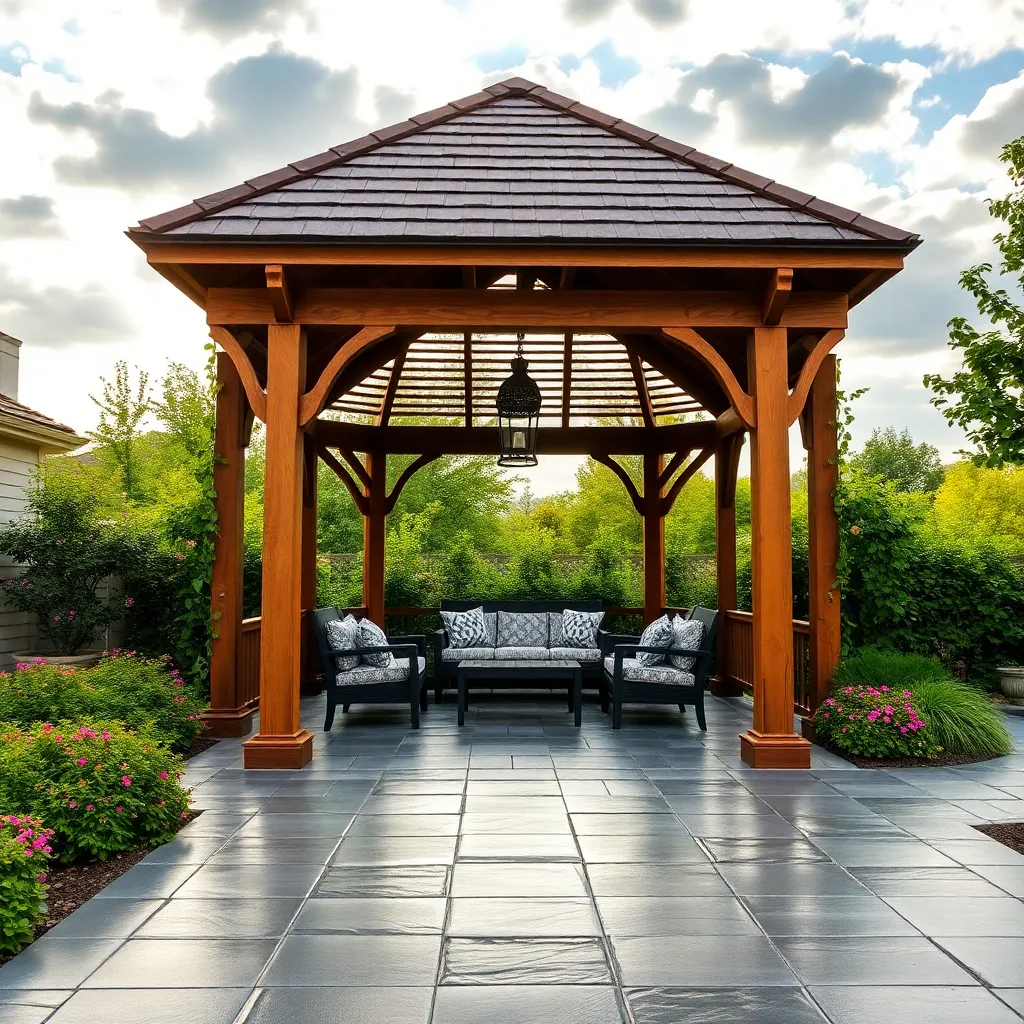
To ensure your gazebo stands the test of time through various seasons, regular maintenance is key. Start by choosing durable materials like treated wood or rust-proof aluminum, which offer resistance against harsh weather. Regularly inspect and seal wooden components with a weather-resistant sealant to prevent rot and warping, and tighten any loose screws or bolts to maintain structural integrity.
Incorporating design elements like a sloped roof can significantly aid in water runoff during monsoons, reducing the risk of leaks. Consider adding gutters and downspouts to manage water flow effectively and protect the foundation. For advanced protection, use UV-protective finishes on exposed surfaces to prevent sun damage, ensuring your gazebo remains a beautiful and functional outdoor retreat year-round.
Stylish Yet Resilient Design Inspirations
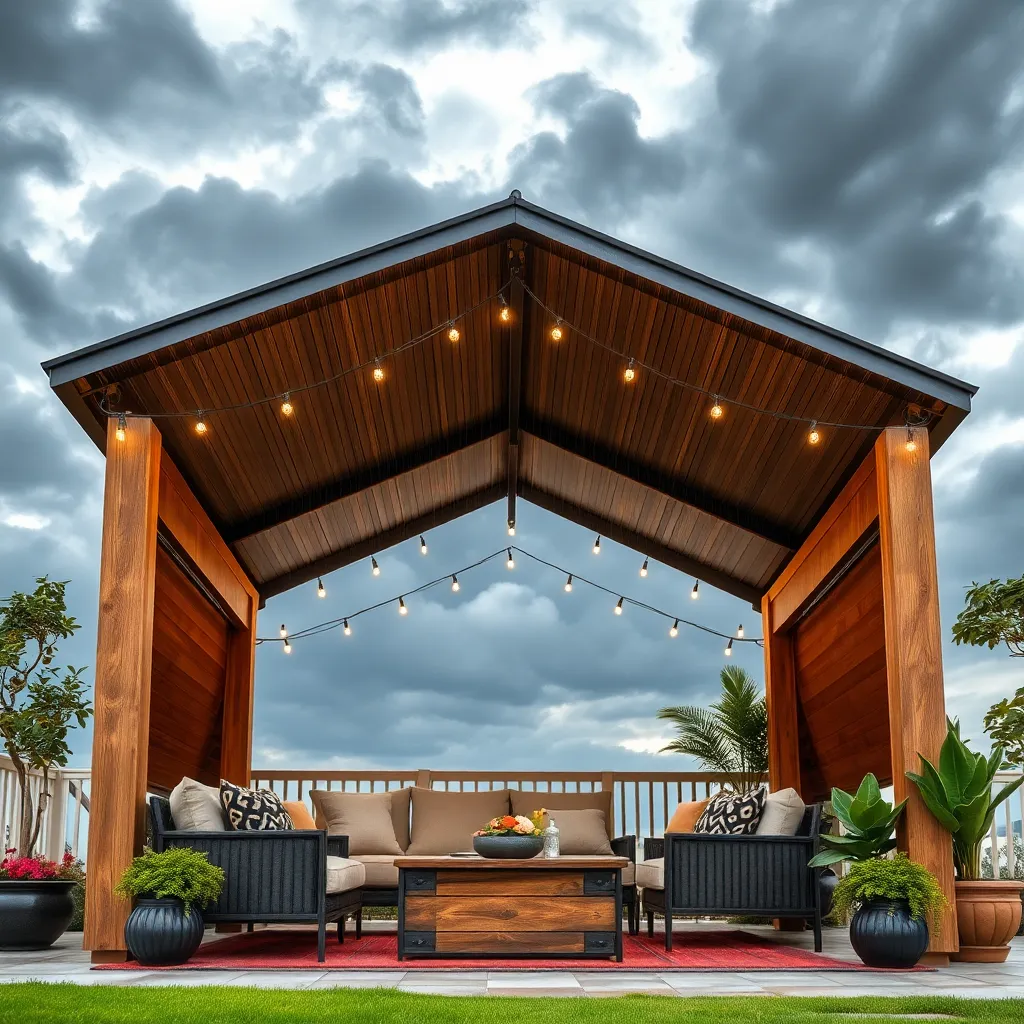
Incorporating a stylish yet resilient design for your gazebo begins with selecting the right materials. Opt for weather-resistant woods like teak or cedar, which not only offer durability but also add a natural, elegant aesthetic. For those looking for minimal maintenance, consider using powder-coated aluminum frames combined with a polycarbonate roof, which can withstand the harshest monsoon conditions while maintaining a sleek look.
Design elements such as sloped roofs can significantly enhance water runoff, preventing pooling and potential damage. To further ensure resilience, incorporate reinforced joints and stainless steel fasteners that resist rust and offer long-term stability. For an advanced touch, integrate built-in drainage systems along the edges to direct water away from the structure. These features not only protect the gazebo during storms but also maintain its stylish appeal year-round.
Conclusion: Creating Beautiful Outdoor Spaces
As we’ve explored the 9 covered gazebo designs that withstand the toughest monsoons, each design symbolically reflects essential elements that fortify and nurture flourishing relationships. From the sturdy foundation of trust and open communication to the flexible adaptability and shared values that weather life’s storms, these designs remind us of the strength in diversity, the beauty of resilience, and the importance of shared growth and protection. Prioritizing quality time, respecting individual spaces, fostering joint goals, and cherishing mutual support are key components that create an enduring relationship shelter.
To translate these insights into action, consider scheduling a “relationship check-in” this week with your partner. This dedicated time allows you to discuss, reflect, and reinforce the foundational elements that keep your relationship strong and thriving.
Remember to save or bookmark this article as a quick-reference guide. As relationships evolve, revisiting these concepts can provide valuable insights and inspiration. Looking ahead, by building upon these sturdy foundations and embracing the spirit of collaboration and understanding, you and your partner are well-equipped to navigate whatever challenges come your way, ensuring a resilient and fulfilling partnership.

